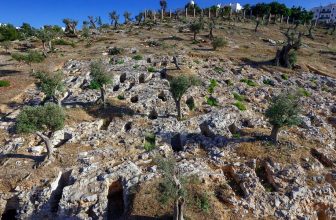Article begins
1933-2024
Credit:
Penny de los Santos

Sally McLendon (1933-2024)
Sally McLendon was an American scholar of Indigenous languages, cultures, and histories in North America, with a special focus on the Indigenous languages and communities of Northern California. She was part of a pioneering generation of women academics who helped open the fields of anthropology, linguistics, and Native American Studies to women and Indigenous scholars.
She was born on October 7, 1933 in Jacksonville Florida, to William (Bill) Alan McLendon, an engineer, and Virginia Frye McLendon, a teacher. After spending her youth moving frequently around the US, Sally enrolled in Smith College in 1951, initially planning to train as an engineer like her father. After a year studying abroad in Paris at the Institut d’études politiques, Sally left Smith and enrolled in Georgetown University’s Institute of Languages and Linguistics, studying French and Spanish. A required course in linguistics introduced her to the field to which she would devote her career, and changed the course of her life.
Sally spent the next ten years training to work as a linguist. She completed her B.S. degree at Georgetown in 1957, after spending 1955 as a student at the Universidad Nacional Autónoma de México in Mexico City. She enrolled in the Master’s program in Linguistics at Georgetown, graduating in 1960, and then began her Ph.D. in linguistics at the University of California, Berkeley, as a student of the remarkable, groundbreaking linguist Mary Haas.
Following Mary Haas’ direction, Sally dedicated herself to the field of California Indigenous languages and cultures, most importantly to the languages and communities of people living around Clear Lake, and in particular to the language now called Eastern Pomo. She completed her Ph.D. at Berkeley in 1966. During this same period, she moved to New York City with her first husband, the linguist Harvey Pitkin, with whom she had two daughters.
Sally spent her career in New York City, as Professor of Anthropology and Linguistics at Hunter College and the CUNY Graduate Center. At Hunter and the Graduate Center, she taught courses ranging from introductory linguistic field methods to an intellectual history seminar on the roots of nineteenth century philosophical movements.
In addition to her linguistics work, Sally contributed important studies of Indigenous California community histories, oral literatures, and the extraordinary Pomo basketmaking tradition, the most famous Pomo art and technology form. Her many publications covered topics ranging from Eastern Pomo linguistics and cultural history, to basketmaking, California Indian feather blankets and other art forms, as well as a biographical study of her mentor Mary Haas, and a number of studies of the fraught history of museum collecting of Native art in the US and Europe. Sally worked especially closely with Pomo elders Ralph Holder, Suzanne Moore Holder, Laura Somersal, Edna Campbell Guerrero, Bill Graves, and Elsie Allen.
Among many awards and honors recognizing Sally’s work were a Guggenheim Fellowship in 1975, and multiple NSF, NIMH, NEH, National Park Service, and Smithsonian grants and fellowships. She was a past president of the Society for the Study of the Indigenous Languages of the Americas, and played leadership roles in the Society for Linguistic Anthropology, and the Linguistic Society of America.
Between 1978 and 2001, she co-organized three major multi-year national exhibitions of Native American art that visited venues ranging from the University of Pennsylvania Museum, the Smithsonian, the National Museum of Natural History, the National Museum of the American Indian, the Brooklyn Museum, the Oakland Museum, the Grace Hudson Museum in Ukiah, California, the Heard Museum in Phoenix, Arizona, the Shanghai Museum of Fine Art, and the Museum of Chinese History, Beijing.
After her divorce from Harvey Pitkin in 1978, Sally married another fellow anthropologist in 1990, William (Bill) Curtis Sturtevant, Curator of North American Ethnology at the Smithsonian National Museum of Natural History in Washington, DC. Bill and Sally enjoyed many years together, collaborating on multiple projects and making frequent research trips until Bill’s death in 2007.Sally died peacefully in her apartment in NYC on August 17, 2024, after several years of declining health. The legacies of which she was most proud were twofold: her family—her daughters and granddaughter—and her lifetime of collaborations with Indigenous individuals and communities in California, as well as elsewhere in North America. Her research remains in use today by community members and scholars engaged in the essential work of language revitalization.
Annabella Pitkin, Lehigh University







